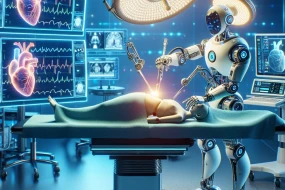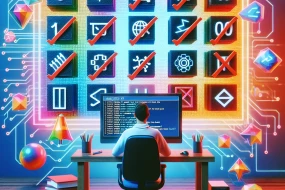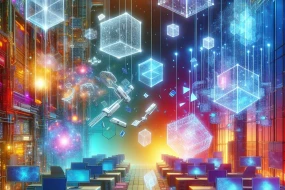
In the world of gaming, graphics are not just eye candy; they are the very fabric of our virtual adventures. The landscapes we traverse, the characters we embody, and the immersive worlds we explore rely heavily on the quality of our computer graphics. But how can one elevate their gaming visuals to the next level? Whether you're a casual gamer or a hardcore enthusiast, optimizing your computer's graphics can transform your gaming experience from good to truly spectacular. In this article, we'll delve into practical strategies to enhance your computer graphics, ensuring every pixel is perfect and every frame fluid.
Understanding Your Hardware
Before diving into software tweaks, it's crucial to understand the hardware you're working with. Your graphics card, or GPU, is the heart of your gaming visuals. Brands like NVIDIA and AMD dominate the market, each offering a range of models tailored to different performance levels. Knowing your GPU's capabilities can help you set realistic expectations and make informed decisions about upgrades. Consider this: trying to run a modern game on an outdated GPU is like driving a sports car with a lawnmower engine—it's just not going to perform as you'd hope.
Updating Graphics Drivers
One of the simplest yet often overlooked steps is ensuring your graphics drivers are up-to-date. Manufacturers frequently release updates that optimize performance and fix bugs for the latest games. Neglecting these updates can lead to subpar performance and even graphical glitches. Picture your drivers as a translator between your game and GPU; if they're not speaking the same language, chaos ensues. Use tools like GeForce Experience for NVIDIA or Radeon Software for AMD to streamline this process.
Optimizing In-Game Settings
Each game comes with a plethora of graphical settings that can be tailored to your liking. While it's tempting to max out every setting, doing so can strain your system and lead to frame rate drops. Focus on key settings like texture quality, shadow detail, and anti-aliasing. For instance, lowering shadow detail can significantly boost performance with minimal visual impact. It's a balancing act, much like adjusting the seasoning in a dish—too much or too little can spoil the experience.
Resolution and Refresh Rate
The resolution and refresh rate of your monitor play pivotal roles in your gaming visuals. Higher resolutions, such as 1440p or 4K, offer sharper images but demand more from your GPU. Conversely, a higher refresh rate, like 144Hz, ensures smoother gameplay. It's akin to choosing between a detailed painting and a fast-paced action movie. Consider your priorities and adjust accordingly, ensuring your monitor settings align with your GPU's capabilities.
Utilizing Graphics Optimization Software
Software tools can automate the optimization process, adjusting settings based on your hardware for the best performance. Programs like NVIDIA’s GeForce Experience and AMD’s Radeon Software can analyze your system and suggest optimal settings. Think of these tools as personal trainers for your GPU, helping you achieve peak performance without the guesswork.
Overclocking Your GPU
For those seeking to squeeze every ounce of power from their GPU, overclocking is an option. This process involves increasing the GPU's clock speed to boost performance. However, it's not without risks; improper overclocking can lead to overheating and hardware damage. It's like tuning a car engine—the potential for speed is there, but missteps can be costly. Ensure you have adequate cooling solutions and proceed with caution.
Improving Cooling Solutions
As your GPU works harder, it generates more heat. Excessive heat can throttle performance and reduce lifespan, making effective cooling essential. Consider upgrading to aftermarket cooling solutions or ensuring your PC case has adequate airflow. It's comparable to keeping a high-performance car engine cool to maintain its efficiency and longevity.
Power Supply Considerations
An often-overlooked aspect is ensuring your power supply unit (PSU) can handle the demands of your GPU. If your PSU is underpowered, your system may suffer from instability or crashes. It's like trying to power a city with a small generator—eventually, something's got to give. Make sure your PSU wattage matches or exceeds the requirements of your GPU, especially if you're considering overclocking.
Avoiding Common Mistakes
Many gamers fall into traps that can hinder performance. Avoid running unnecessary background applications, as they consume valuable resources. Regularly clean your system to prevent dust buildup, which can impede cooling. And lastly, don't neglect regular maintenance, like defragmenting your hard drive, to keep your system running smoothly. Think of your computer as a high-performance athlete—it needs proper care and maintenance to perform at its best.
Staying Informed and Adapting
The world of gaming technology is ever-evolving. Staying informed about the latest advancements in GPU technology, software updates, and gaming trends can keep your system performing optimally. Join forums, read reviews, and watch tech channels to stay ahead of the curve. Think of it as keeping up with the latest fashion trends—what's in vogue today might be outdated tomorrow.































